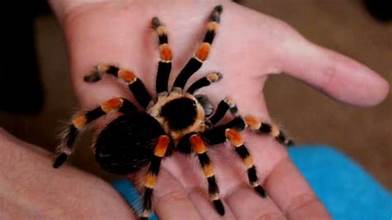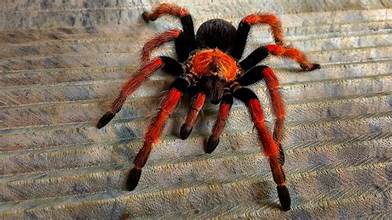Tarantulas, with their fascinating and unique nature, are low-maintenance pets that appeal to exotic pet enthusiasts. However, these eight-legged creatures require specific care and knowledge to ensure their well-being. This guide covers everything a prospective owner should know about tarantulas, including their habitat, diet, temperament, health concerns, and essential care tips.
Choosing the Right Tarantula
Tarantulas come in various species, each with different care requirements. Some of the most popular species for beginners include:
- Mexican Red-Knee (Brachypelma hamorii):
Docile and slow-moving, making them great for beginners.
- Chilean Rose (Grammostola rosea):
Hardy and low-maintenance.
- Curly Hair Tarantula (Tliltocatl albopilosus):
Calm and easy to handle.
More advanced species, like the Cobalt Blue or Indian Ornamental, require experienced care due to their speed and aggression.
Habitat Setup
Creating a suitable environment is crucial for your tarantula’s health. Here’s what you need:

- Enclosure:
A well-ventilated, escape-proof tank is ideal for terrestrial species. Terrestrial species need a more expansive enclosure with a secure lid, while arboreal species require a taller setup.
- Substrate:
Coconut fiber, peat moss, or topsoil to maintain humidity and burrowing needs.
- Hiding Spots:
Cork bark, logs, or artificial caves for security.
- Humidity & Temperature:
Maintain humidity levels between 60-80%, depending on the species. Ideal temperatures range from 70-85°F.
- Water Dish:
A shallow dish with clean water at all times.
Feeding and Diet
Tarantulas are carnivorous and primarily eat live prey. Their diet includes:
- Crickets
- Mealworms
- Dubia roaches
- Occasional small pinky mice for larger species
Feed juveniles every few days and adults once a week. Remove uneaten prey after 24 hours.
Handling and Temperament
Tarantulas generally do not enjoy handling, and excessive stress can lead to defensive behavior. If you must handle them, do so gently and close to the ground to prevent injury from falls. Some species are more docile, while others can be skittish or aggressive.

Molting Process
Tarantulas molt as they grow, shedding their old exoskeleton. Signs of an upcoming molt include:
- Reduced activity
- Loss of appetite
- Dull coloration
During molting, avoid disturbing your tarantula, and never attempt to remove the old exoskeleton manually.
Health Concerns
Tarantulas are generally hardy, but they can suffer from:
- Dehydration:
Ensure proper humidity and access to fresh water.
- Falls:
It can cause fatal injuries, especially for heavier species.
- Parasites & Mites:
Maintain a clean enclosure to prevent infestations.
Lifespan and Commitment
Tarantulas have impressively long lifespans. Female tarantulas can live up to 20 years, while males typically live only a few years after maturity. Owning a tarantula is a significant long-term commitment that requires responsible care.
Legal Considerations
Some tarantula species are protected under wildlife laws. Before purchasing, it’s crucial to check local regulations to ensure legality. This responsible approach is key to being a good tarantula owner.
Final Thoughts
Benefits of Tarantula Ownership Tarantulas make unique pets that require minimal maintenance compared to traditional animals. They can be fascinating companions for years with the proper knowledge and setup. The benefits of owning a tarantula include their low maintenance, their unique appearance, and the opportunity to observe their fascinating behaviors. A tarantula might be perfect if you’re ready for an exotic, low-maintenance pet!
Do you have experience with tarantulas or have any questions about their care? Share your thoughts in the comments below!




